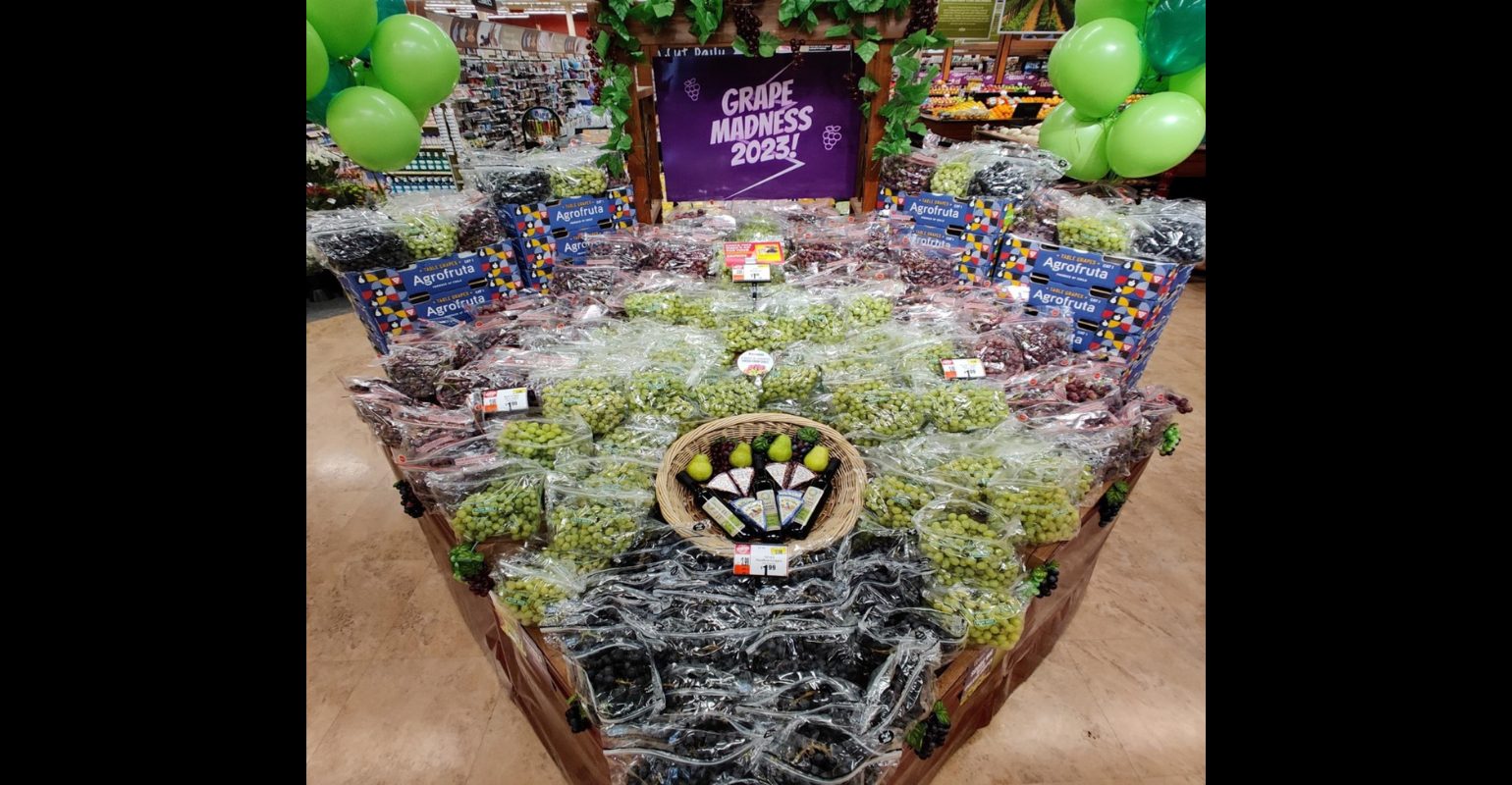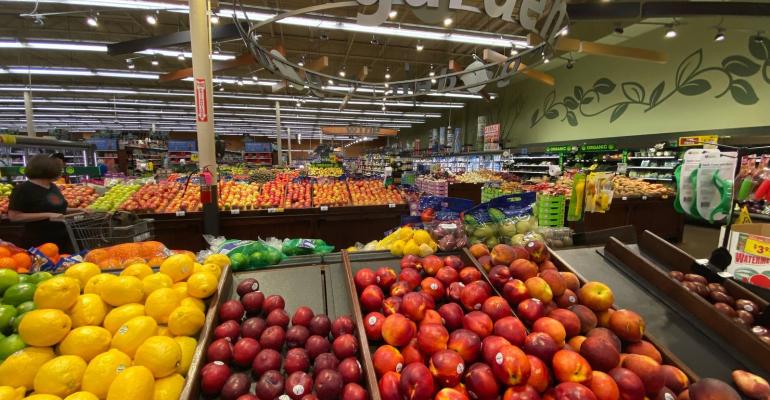Supermarket produce sales are ripe for expansion.
While strong price increases for a plethora of fruits and vegetables are causing many consumers to cut back on their produce spending, volume sales remain ahead of pre-pandemic levels, indicating the importance shoppers still place on the category, analysts say.
But it is crucial that supermarkets implement bold merchandising strategies if they are to propel activity. Mass supercenters and club stores, for instance, have gained 2.5 points of produce market share since 2020, said Jonna Parker, principal of fresh foods for Circana (formerly IRI), a Chicago-based market research firm.
“Too often the produce selection in a traditional grocery store aims to be all things to all people all of the time,” she said. “What clubs and supercenters do better is to double-down on the products that are meaningful and will resonate best with their shoppers.”
In response, supermarkets should tailor their produce — along with associated pricing, promotions, and marketing — to the needs and interests of the specific customers in each location, Parker stated.
“There is an almost immediate sales impact when retailers differentiate themselves,” she said. “Supermarkets need to change tactics or the share loss going forward is going to look even worse.”
Making produce more desirable is vital if merchandisers are to trigger additional buying from cost-conscious shoppers. Research from the Newark, Del.-based International Fresh Produce Association (IFPA) found that about 40% of consumers will purchase the planned fresh commodity regardless of price; 15% will purchase a different commodity in the fresh category when price is an issue; and 47% will either not buy or switch to frozen or canned options.
“Consumers are prioritizing discounts and private labels over brand loyalty and factors like sustainability,” said Gina Jones, IFPA vice president of global insights. “Supermarkets must be able to communicate value which is not just price related but can also include packaging sizes and targeted offers.”

Vibrant displays are powerful magnetics for attracting shoppers.
Yet, the uncertain availability and quality of fruits and vegetables because of weather and supply chain issues also is preventing supermarkets from leveraging traditional promotions, said Anne-Marie Roerink, principal and founder of 210 Analytics LLC, a San Antonio-based market research and marketing strategies firm, and preparer of the Power of Produce 2023 report, published by Arlington, Va.-based FMI—The Food Industry Association.
“The good news for produce is that most consumers want to eat more of it as they see it as being nutritious and healthful,” she said. “But increasingly, the reality of life stands in the way.”
Some retailers, however, are demonstrating “enormous creativity” by offering such incentives as one-day or three-day specials; mix and match specials that “take the pressure off one commodity”; and by including produce in meal deals along with center-of-the-plate meat and side dishes, Roerink noted.
She suggested that supermarkets also give a greater merchandising emphasis to produce selections that are increasing in popularity, such as salad kits, berries, cucumbers for snacking, and deli prepared salads, while meeting the still strong demand for potatoes, onions, lettuce, and other basic meal builders.
“Consumers are buying just what they need to keep their total basket ring low and are not looking to stock up,” Parker said, which includes trading down to lower-price options within specific produce categories. “There is a perception among shoppers that produce prices are too high which isn’t matching reality, but that perception is how people buy.”
Despite an average price increase of 7.1% for the 52 weeks ending March 26, 2023, the produce price rise was still lower than the approximately 10% average store-wide increase, and produce pricing was flat for a recent four-week period, she said.
“Produce inflation is starting to plateau and where there was a huge divide last year between dollar and unit growth, that gap is now closing,” said Jeff Cady, vice president of produce and floral for the Tops Friendly Markets and Price Chopper/Market 32, banners which are owned by Schenectady, N.Y.-based Northeast Grocery Inc.
He noted that in recent weeks the stores’ produce unit sales growth has been nearing the dollar increases, “where there was an 8% swing this time last year.”
The chains are seeking to propel produce activity by merchandising both premium and lower-cost selections, with allocations based on the demographics of shoppers in each location, Cady said.
Outlets in affluent areas, for instance, might have four to six feet of packaged organic salads, versus one to two feet in an inner-city store, he stated, noting that “value is getting what you pay for, and it is important that we meet that definition for as many shoppers as possible.”
In addition, the banners’ produce departments are becoming more visually appealing, and generating greater employee motivation, because of ongoing merchandising contests between stores with money, trophies, and certificates going to the parties that create the most attractive layouts, Cady said.
“It is important to make sure that the produce teams are excited about what they are doing,” he said. “It also gets consumers into the buying spirit when they see these fantastic ‘knock your socks off’ displays.”





